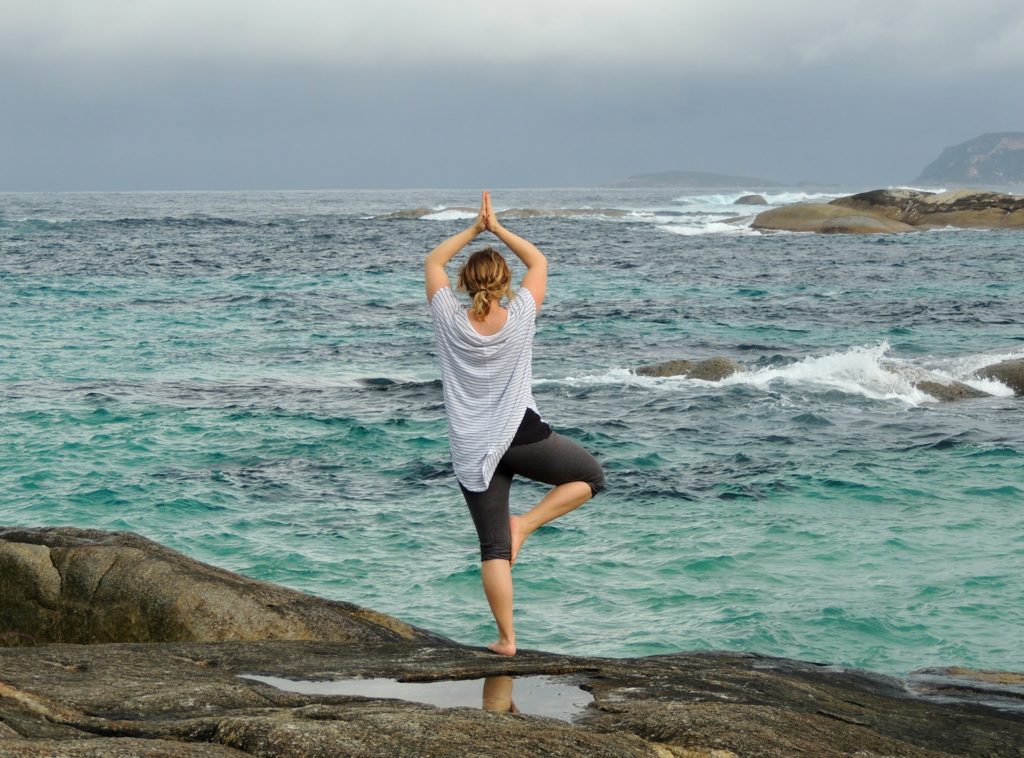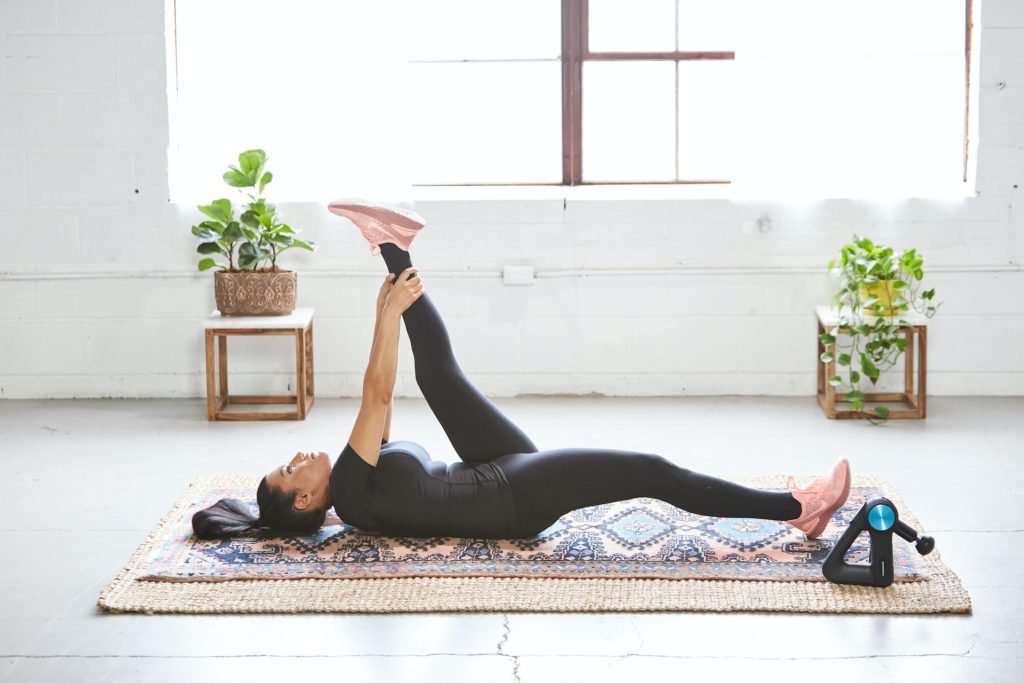For many people, the thought of meditation is off-putting. And sometimes it’s just not available to us in the moment. Fortunately for us, mindfulness and meditation aren’t synonymous. Accessing mindfulness without meditation is always an option.
Everyone requires something different in any given moment to help find peace, ease, joy, and fulfillment. Thankfully, meditation isn’t the only answer. Since mindfulness is simply the practice of paying open and non-judgmental attention for a sustained period of time, we can practice it no matter what we are doing. There are plenty of other ways to practice mindfulness without meditation that can help us cultivate mindful awareness and enhance our sense of well-being. Read on for 7 ways to practice mindfulness without meditation.
How to Practice Mindfulness Without Meditation
Start Your Day Mindfully
Wake up a few minutes earlier than normal. Before getting out of bed or grabbing for your phone right away, notice how your body feels or how the light is filtering into the room. Take a few mindful breaths. Perhaps take a moment to reflect on gratitude for another day of opportunities. Or, drink your morning coffee or tea mindfully by putting your phone down and paying attention to the flavor, aroma, temperature, and textures of your cup.
Practicing mindfulness first thing in the morning is a wonderful way to start the day. It helps us to start the day feeling calm, refreshed, and clear-minded.

Spend Time In Nature
Spending time exploring the majesty of the great outdoors is another awesome way to practice being mindful. Research shows that 20-30 minutes in nature has been found to reduce cortisol levels. According to new research from the University of East Anglia, living close to nature and spending time outside has significant and wide-ranging health benefits. In fact, the report reveals that exposure to greenspace reduces the risk of type II diabetes, cardiovascular disease, premature death, preterm birth, stress, and high blood pressure. (1)
As you walk along the beach, through a wooded forest path, or any other natural setting, be attentive to the sights, sounds, and smells of the space you’re in. Notice when your mind has drifted off into thoughts and gently bring your awareness back to your surroundings. How does it make your heart feel? Does it inspire you? If so, how? Be curious.

Spend Time With A Pet
Pets bring so much love, joy, and comfort to our lives. Studies show that they can help reduce stress, anxiety, and depression. Additionally, animals are naturals at living in the moment and can help us do the same.
Why not take some time to “just be” with them? Notice what colors or patterns they have on their skin, coat, or feathers. Notice what it feels like to touch them. Are they soft, fluffy, smooth, scaly? Notice how they respond to your touch and your voice. If you’re doing an activity together, like walking a dog or riding a horse, mindfully observe your physical bodies as you move together.
Of course, if you don’t have a pet of your own, that’s ok! You can practice being mindfully aware with other people’s animals by helping out a neighbor with their pet or volunteering to walk dogs or sit with the cats at a shelter.

Learn A New Skill or Hobby
If you have a natural desire to learn, mastering a new skill or expanding your knowledge on a subject is a terrific way to improve yourself and cultivate mindfulness. Many hobbies are inherently mindful activities that can help us achieve balance in life.
Gardening, cooking, knitting/crocheting, learning an instrument, or model building are just some ideas of activities that put you in the “flow state” – a state where you are fully engaged. Although in-person classes may be limited right now due to the pandemic, there are books, online tutorials, and masterclasses available on almost any topic imaginable.

Prepare and Savor A Meal
If you enjoy cooking, prepare a favorite meal. Observe how it feels to chop/cut/slice the ingredients. Notice the aromas, the textures, and the colors of the ingredients.
Mindfully eat your meal. Notice the smells and how it might trigger your hunger cues. What do you taste? What does the texture feel like on your tongue? Be open, curious, and non-judgmental. This is not about critiquing your cooking.
Slowing down to eat a meal mindfully is a great way to practice mindfulness without meditation. Simply slowing down to notice the raw sensations of eating can bring you into the present moment and give you a new appreciation of the food you consume.

Get Creative
When we immerse ourselves in creative activities, we often naturally experience mindfulness. We’re not thinking about anything except the present moment because we’re too busy experiencing the activity. Worries seem to float away.
Some fantastic activities for adults are coloring, painting, drawing, writing, photography, and flower arranging. There are so many possibilities to express creativity! In fact, spending time engaged in crafts and hobbies is proven to stimulate the creative centers of the brain and will help nurture a more fulfilling downtime.

Journaling
Lastly, when we’re not able to meditate, journaling is a powerful way to cultivate mindfulness. The very act of writing places you fully in the present moment. It forces you to focus inward and put aside all the multi-tasking, similar to meditation. In fact, some people consider journaling a form of meditation. Rather than reacting to the thoughts and feelings whirling inside of your head, you are simply recording and examining what’s going on there.
Furthermore, journals are great tools for self-reflection. Helping you find patterns in your feelings and thoughts, discover common stress triggers, and see what’s working and what’s not. Setting an intention to be open and curious before you get started can help.
If you don’t know where to start, check out my blog post, Mindful Journal Prompts To Help You reconnect With Yourself .

Short Mindfulness Exercises
If the suggestions above don’t resonate with you or if they’re too time-intensive, below I’ll share several quick ways for how to practice mindfulness without meditation. Sometimes all we need is a 1 or 2-minute exercise to help diffuse anxiety. Most of these practices can be done in a few minutes or less:
Five Finger Breathing.
This is a great exercise for when you’re anxious because it brings awareness to your senses of seeing & feeling, while also bringing awareness to multiple body parts. This can be an effective trick to help you access a sense of calm and focus. It’s an incredibly easy technique for adults and kids!
Step 1. Place one hand in front of you and spread out your fingers.
Step 2. Take the index finger of the other hand and begin to trace upwards on the outside of the thumb as you breathe in deeply.
Step 3. As you exhale, trace down the inside of your thumb.
Step 4. Repeat for the remaining four fingers. Tracing upwards on the inhale and downwards on the exhale.
Step 5. If desired, reverse the process and trace from your pinky back to your thumb.
You can also check out this short video by Cory Muscara, founder of the Long Island Center for Mindfulness, showing how it’s done.
Five Senses Exercise.
This is another quick yet effective exercise that will help bring yourself back to the here and now when you’re feeling overwhelmed.
Step 1. Keeping the eyes open, notice five things you can see. Say them silently to yourself or out loud and pause to take them in completely.
Step 2. Notice four things you can feel in your body. Note them out loud or in your head, and rest your awareness with each sensation for at least one deep breath cycle.
Step 3. Notice three different sounds you can hear right now.
Step 4. Notice two things you can smell.
Step 5. Notice one thing you can taste. It might be your toothpaste, leftover taste of your last meal, or beverage.
Mindfully Eat One Thing.
Take a raisin, a piece of chocolate, or a berry and eat it mindfully. Purposefully slow down and savor it. Use your senses to see it, touch it, and taste it. Smiling between each bite can help evoke a sense of gratitude for simple moments and simple pleasures.
Take a Break to Stretch.
If you’re sitting at the computer or sitting for long periods in general, it can be easy to become disconnected from what’s happening in your body. Be sure to gently stretch every hour or so. Stand up tall and roll your shoulders a few times, allowing shoulder blades to melt down the back. Next, inhale, stretching your arms towards the sky, spreading fingers apart. Exhale fully, bringing your arms back down to your sides. Lastly, gently bend at the waist, folding over to touch your toes if possible. This will help to connect you with your body and release tension while giving your brain a break.
Practice the S.T.O.P. Method
This practice was developed and made popular by Mindfulness-Based Stress Reduction founder Jon Kabat-Zinn, PhD. It’s a simple way to practice being mindful, especially while feeling stressed. Here’s how to practice:
Stop what you’re doing and take a pause. Allow yourself to rest.
Take a few deep breaths, inhaling and exhaling fully. Notice the expansion of the belly on the inhale and the contraction on the exhale. Focus on the transition between breaths. It may help to say to yourself “in” as you breathe in and “out” as you breathe out. Once you’ve taken a few deep breaths, begin to bring your attention to the sensation of your feet on the floor and feeling the support of the ground.
Observe your experience exactly as it is, with a sense of kindness and curiosity, and without trying to change anything. Simply notice what’s happening in your mind and body. What is the momentum of your mind? Is it calm or busy? Notice any mood or emotional states that may arise. Notice what is happening in your body and the physical sensations that are present.
Proceed with whatever you were doing with intentionality, moving on with your day from a place of calm and presence.
Notice the Positive.
Noticing the things that bring you joy is one of the most pleasant ways to cultivate mindfulness. By taking a few moments to notice what makes you happy, you’re training the mind to recognize more of them in the future. Here’s how:
Step 1. Find somewhere to walk or sit, where you can observe nature. It may be in your yard, sitting by a window in your home, in a park, on a trail, etc).
Step 2. Take a few deep breaths. Notice the sensations of breath entering and leaving your body. Observe the sensation of your feet on the ground, tuning in to the weight of the body and the feeling of being grounded.
Step 3. Begin to look for something you like. It can be as simple as a color or the sound of birds chirping.
Step 4. When you notice something you appreciate, say to yourself, “I like that flower,” or “I like the color green.” Simply say this every time you notice something you enjoy.
Step 5. Keep in mind that there’s no right or wrong with this practice. If your mind wanders off or you begin to judge yourself or the experience, simply come back to the present moment by feeling your feet on the ground.
Step 6. After a few minutes, return to your day. Carry this intention to notice more of what you enjoy-however subtle it may be- with you into the rest of your day.
Above all, by regularly practicing these short mindfulness exercises, we’re better able to cope with the difficult thoughts and emotions that perpetuate stress and anxiety. It doesn’t take a lot of time to cultivate mindful awareness. We just need to remember to do it. And then we can begin to harness the ability to deal with life’s challenges with a calm, clear mind.
Sources
University of East Anglia. “It’s official — spending time outside is good for you.” ScienceDaily. ScienceDaily, 6 July 2018. <www.sciencedaily.com/releases/2018/07/180706102842.htm>

